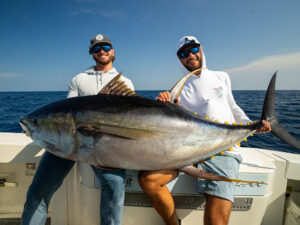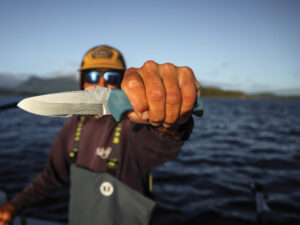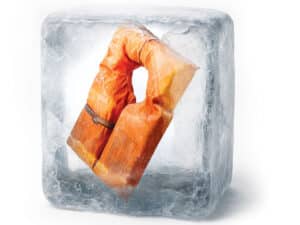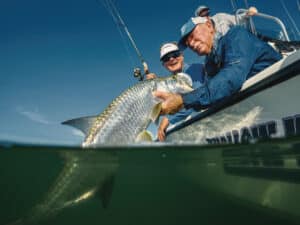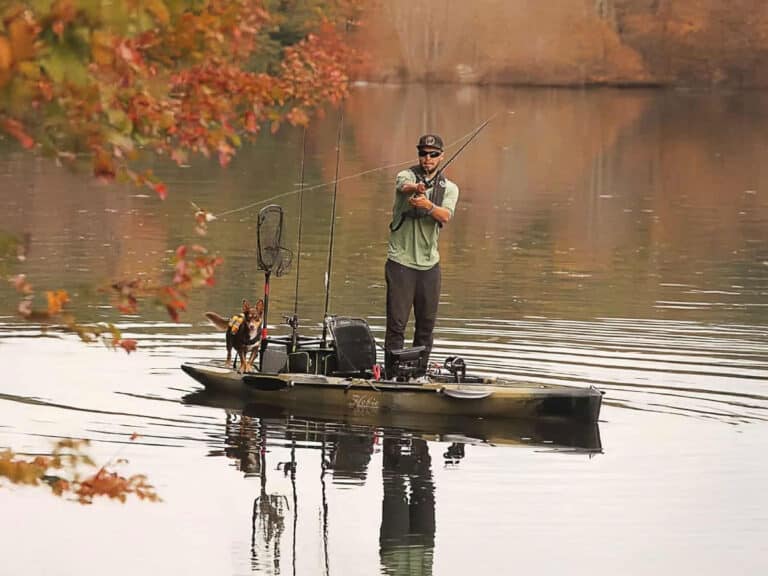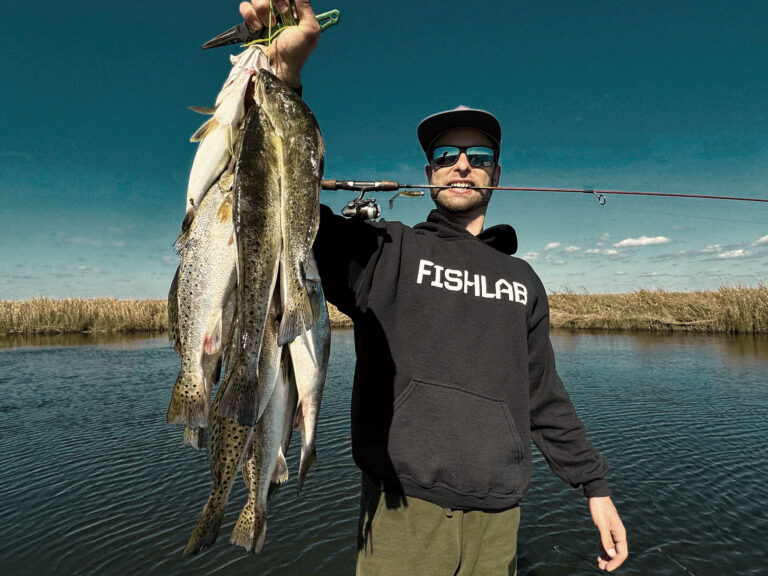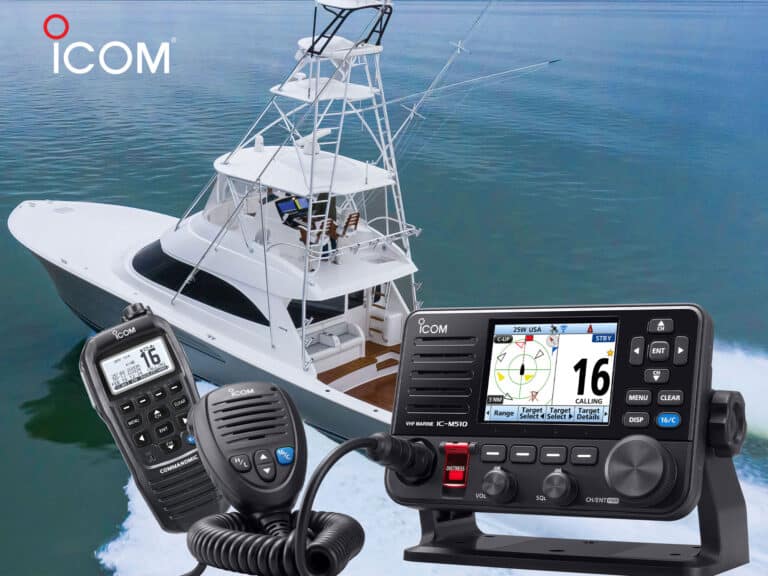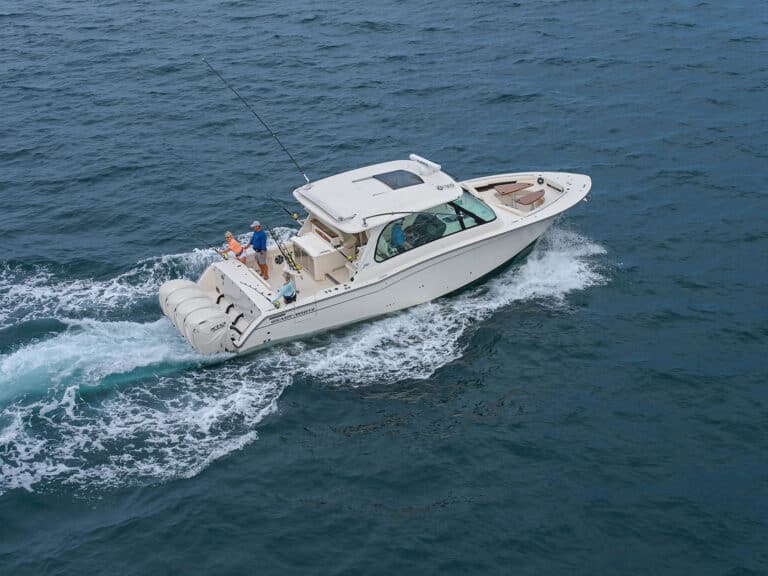
A number of inshore anglers who target tarpon, redfish, bonefish, permit or striped bass in shallow water would never dream of using anything but a push pole to propel their boats silently while they search for their quarry.
Yet many of them probably never expected the advent of the whisper-quiet, GPS-guided trolling motors.
Two seasoned fishing guides explain how each propulsion method works to their advantage.

“I have a 23.5-foot Carbon Marine G2LR graphite push pole as well as a remote-controlled Minn Kota Terrova iPilot GPS trolling motor on my Hell’s Bay Marquesa. Both serve me well,” says Capt. Buddy Kirkhart of Stuart, Florida. “If I’m in the rivers, searching for laid-up fish along the edges, or I’m fishing flats less than 5 feet deep, I use the push pole.”
Push poles come in a range of lengths, usually from 18 to 24 feet, and vary in stiffness, diameter and weight. Like fishing rods, push-pole choices are personal, explains Kirkhart. “One guy may like a pole with more bend, while others want a pole that’s stiffer, more lightweight, and has a small diameter. Mine flexes slightly and is fairly light. The weight and price (quality graphite push poles are pricey) had a lot to do with my choice.
“But off the beach, where I normally live-bait for tarpon in up to 14 feet of water, I use the trolling motor exclusively. It is paramount for the type of fishing I do because it saves time and energy,” Kirkhart adds. “The latest generation of trolling motors with GPS is very accurate, dependable and really quiet, and those beach tarpon hear outboard noise all day long. So if you just run the troller slow and steady, it’s not a problem. The pressure wave coming off the boat is a bigger factor than the noise.”

Kirkhart’s trolling motor is a bow mount (longer shaft, remote control and other features) with more precision than stern-mount versions. It also has the anchor-mode feature to hold the boat in position. Anchor mode, with hands-free operation, negates the need for the traditional buoyed release anchor, eliminating potential entanglements with the anchor line, which Kirkhart feels can often spook the fish.

Capt. Rick Grassett guides fly and spin clients after tarpon along the beaches of Sarasota, Florida. He primarily uses a 24-foot Stiffy Extreme Series push pole to propel his Action Craft 1720, although he also has a manual, 80-pound-thrust Minn Kota trolling motor mounted to the stern, wired so he can switch the troller on and off from atop the poling platform.

“I’m fishing shallow water the majority of the time, waiting for fish at pinch points with a release anchor deployed,” Grassett says. “If we hook a fish, or I need to reposition to get within casting range, I often use the trolling motor to get the extra push and get moving, especially in a chop, a strong tide or head wind. I’d be at a disadvantage without the trolling motor, but I use it very sparingly because tarpon can see and hear it running in that shallow water. Of course, that becomes less of a factor in depths of more than 8 feet.”

Grassett, who also fishes live crabs and lures for tarpon in deeper water ranging from 12 to 25 feet, uses the trolling motor to chase fish after the hookup as well.
Both push poles and trolling motors have a place in inshore fishing. Whether you target tarpon or other shallow-water game, the addition of manual and electric propulsion greatly enhances your chances for success. Just be sure to weigh their advantages and requirements before purchase.
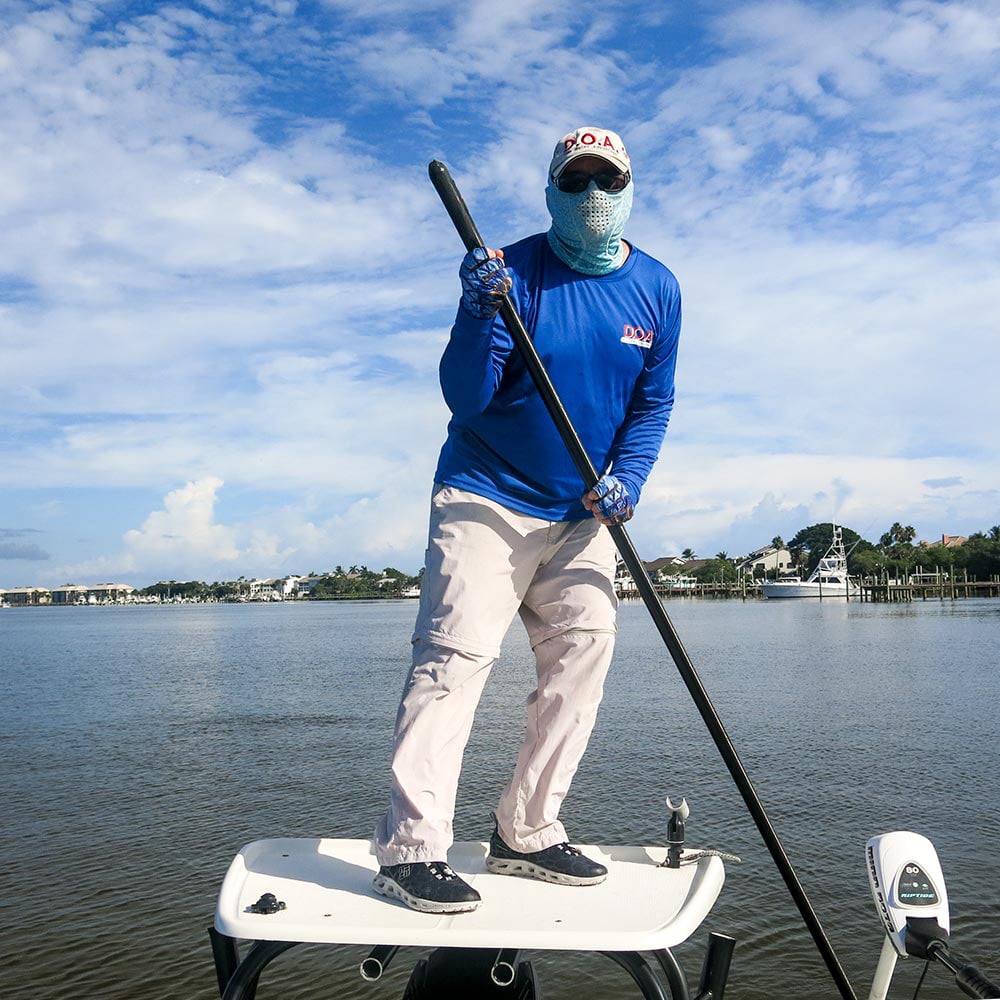
Push Pole Tips:
1. Buy the lightest pole you can afford. Less weight means less effort and fewer sore muscles.
2. If your boat has a poling platform, an 18- to 21-foot pole is fine for water 5 feet or shallower. If you fish deeper water, opt for a 23- or 24-footer. A longer pole allows more hand-over-hand propulsion without picking the pole back up, reducing both effort and noise.
3. Thinner is better. A smaller diameter creates less drag in the water, also reducing the effort and the noise.
4. A pole with some flex helps slingshot the boat forward in shallow water.
5. A stiffer pole is often considered better for deeper water of 5 feet or more.
Trolling-Motor Tips:
1. Most 16- to 18-foot boats require 70 to 80 pounds of thrust. That’s a 24-volt motor requiring two batteries.
2. Larger boats call for 105 to 112 pounds of thrust. That’s a 36-volt motor requiring three batteries.
3. Two or three additional batteries take up considerable space. Make sure your boat has enough storage.
4. You need deep-cycle batteries for a trolling motor. Each adds 35 to 45 pounds of weight to your boat and could increase its draft. Consider if you need a 36-volt motor or can get by with a 24-volt.
5. The extra weight could also affect the boat’s performance, especially if the batteries are mounted far aft or forward of the beam, so carefully select the best mounting location.

